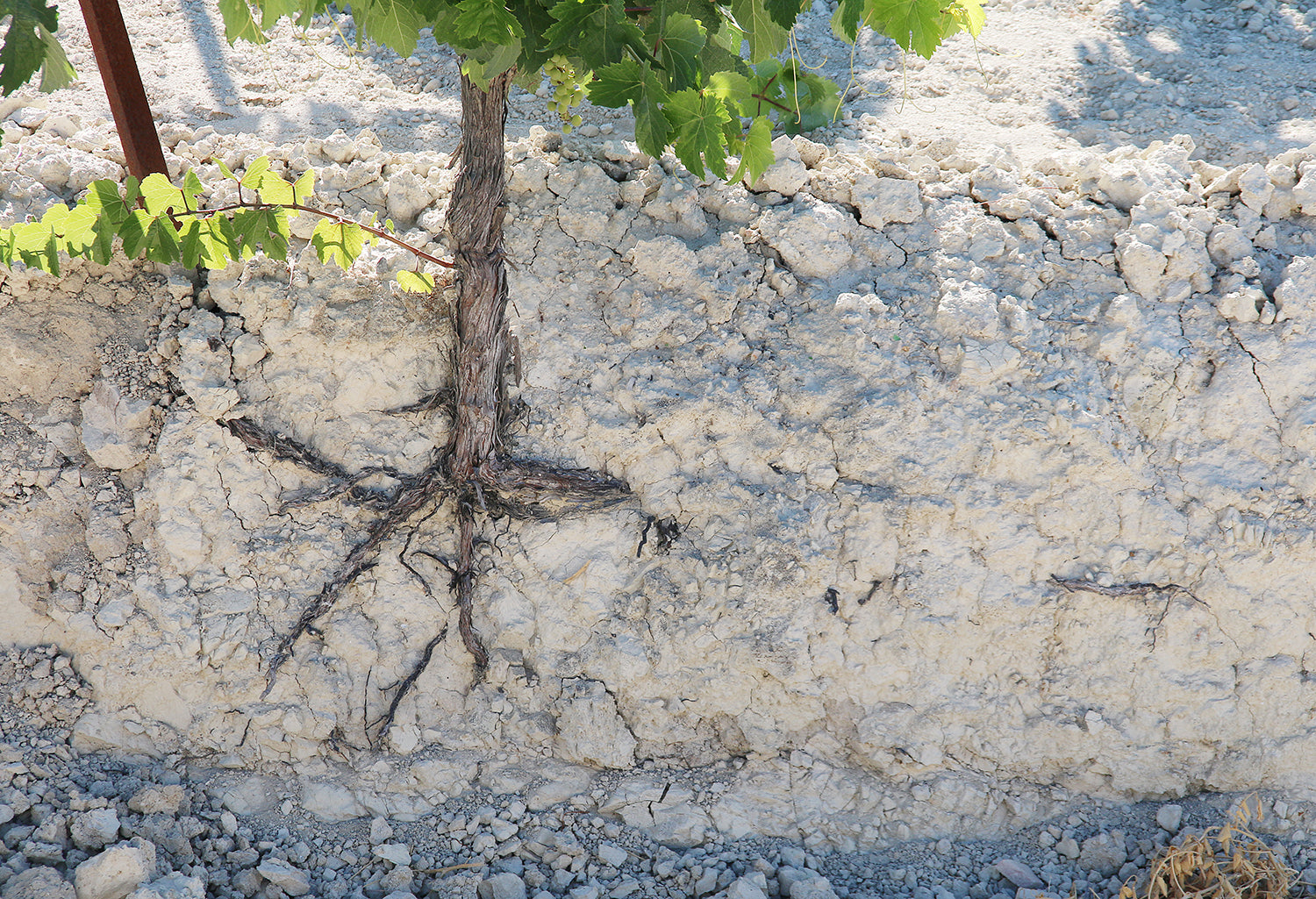Of all vineyard soils, limestone is perhaps the most highly prized. Some might argue that it is fetishized, it’s certainly widely regarded to be a prized element in many terroirs.
France has a lot of it, where it famously forms the basis of terroirs in Burgundy, Champagne, Sancerre and Saint-Emilion. Soil scientists Claude and Lydia Bourguignon went as far as saying, ‘All great red wines are produced on limestone soils’.
There’s relatively little limestone in California, but Bob Haas went looking for it when he established Tablas Creek in Paso Robles with Château de Beaucastel. On a visit there a few years ago his son Jason demonstrated one of the reasons it’s so highly prized: he took a piece and poured water on it, and the water was immediately soaked up.
Limestone is good at absorbing water when there is plenty around, and then releasing it slowly to the vine roots when it is needed.
It is also alkaline; this has pros and cons for viticulturalists. In alkaline soils, iron is less available to the vine roots, and a deficiency called chlorosis (where the leaves turn yellow and photosynthesis is affected) can be a problem. This was one of the major problems when vineyards in limestone rich areas of France were replanted after phylloxera hit in the late 19th century: many of the new American vine rootstocks couldn’t cope in limestone soils.
Where to find limestone
The most famous stretch of limestone is known as the Paris Basin. It runs through the centre of the Loire, Burgundy, Champagne, and then resurfaces in the south of England (where the emerging UK wine industry is beginning to make the most of it).
Limestone comes in various types, ranging from soft chalk to quite hard rocks. The majority comes from dead sea creatures with shells rich in calcium carbonate. Over immense periods of time they die, fall to the bottom of the sea, and are compressed in layers, adding perhaps a millimetre over a thousand years. Geologists have identified limestone from different eras: in Chablis, renowned for limestone soils, the Petit Chablis vineyards at the top of the slopes have harder, younger Portlandian limestone; while the Premier and Grand Cru vineyards are fossil-rich Kimmeridgean.
In Jerez simple algae called diatoms, were deposited during the formation of the Guadalquivir river. As the seawater receded the skeletons were deposited, forming the basis of the chalky albariza soils which Jerez is known for today.
There’s also another form of limestone called pedogenic lime present in arid soils. Where there is very little rainfall, calcium carbonate can accumulate in a layer below the soil surface, adhering to soil particles, or stones which take on a white crust. This is a feature of some parts of Mendoza. PerSe’s Monasterio vineyard has very high levels of this sort of limestone. It is also found in Central Otago in New Zealand.
The limestone effect
How does limestone affect the flavour of wine? It’s an indirect relationship, as with all plants, you don’t taste the actual soil minerals in the fruit. But I find it influences the feel of the wine in your mouth, and particularly the acid line. Wines grown where there is a significant portion of limestone show a lovely brightness and freshness, and the acidity seems to be prominent, but well integrated, and felt more at the sides of the mouth.


